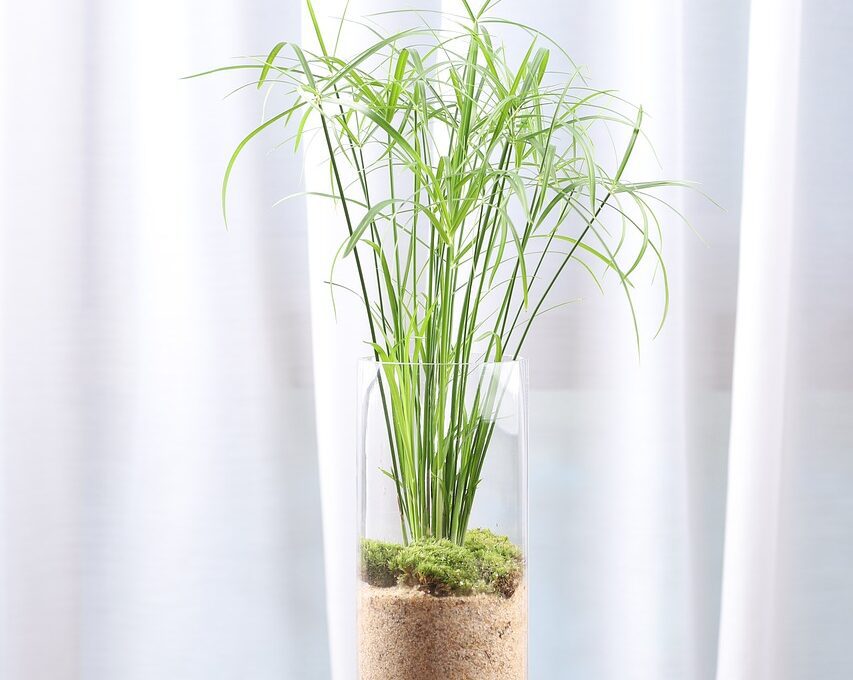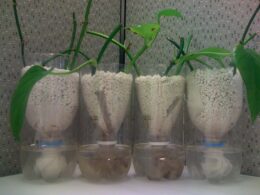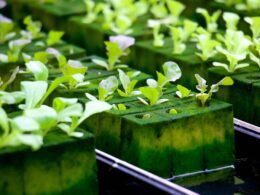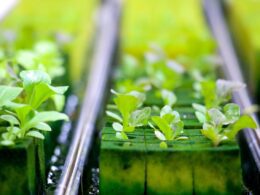Do you want to ensure that the water you drink or use for your household is safe and healthy? One of the crucial factors in maintaining healthy water is ensuring that it has enough oxygen. Oxygen is essential for the survival of aquatic creatures and helps prevent the growth of harmful bacteria and algae in water.
But how do you add oxygen to water naturally?
Luckily, there are several natural methods for adding oxygen to water that you can easily implement. From aeration to using aquatic plants, these methods not only improve water quality but also support a sustainable, eco-friendly approach to water management.
In this article, we will explore these methods and provide tips for maintaining healthy oxygen levels in your water.
Importance of Adding Oxygen to Water
It’s crucial to infuse H2O with fresh air to ensure a healthy aquatic ecosystem. We all know that water is essential for life, and it’s no different for the creatures that live in it.
In fact, it’s even more important to keep water oxygenated, as it directly affects the survival of aquatic life. When water is oxygenated, it has many benefits for the creatures that rely on it.
Fish and other aquatic life need oxygen to breathe, and a lack of it can lead to serious health problems. Oxygenated water also helps to break down organic matter, keeping the water clean and healthy for all the creatures that live in it.
On the other hand, oxygen deprivation can have serious effects on aquatic life. Without enough oxygen, fish and other creatures can suffer from stress, illness, or even death. Additionally, when water is not oxygenated, it can become stagnant and filled with harmful bacteria and parasites.
So, it’s important to keep water oxygenated to ensure a healthy and thriving aquatic ecosystem.
Aeration as a Natural Method for Adding Oxygen
Aeration, a natural way to infuse water with oxygen, can be achieved through the use of bubbling systems or by exposing the water to air. This method is especially important for bodies of water that are stagnant or have low oxygen levels.
Aeration can improve the quality of water and promote the growth of healthy aquatic life. Benefits of aeration include:
- Increased oxygen levels in the water
- Reduction of harmful algae growth
- Improved water clarity
- Enhancement of natural aquatic habitat
DIY aeration projects can be simple and cost-effective. Bubbling systems can be made with materials such as air stones, tubing, and air pumps. Exposing the water to air can be done by installing a fountain or waterfall.
These methods not only add oxygen to the water, but also create an aesthetically pleasing feature to any water source. By incorporating aeration into your water management plan, you can ensure the health and safety of your aquatic environment.
Whether it’s a backyard pond or a large lake, adding oxygen to the water can make a significant difference in the overall quality. So why not try a DIY aeration project and see the benefits for yourself? Your aquatic friends will thank you.
What is the Relationship Between Oxygen Levels and Water Circulation in Hydroponics?
Water circulation in hydroponics plays a crucial role in maintaining optimal oxygen levels for plant growth. Adequate circulation ensures efficient nutrient uptake and prevents oxygen deficiency, which can lead to root rot. Properly managing the watering schedule in hydroponics helps maintain a balance between delivering water and nutrients while allowing excess water to drain, promoting oxygenation of the nutrient solution.
Using Aquatic Plants to Oxygenate Water
If you want to enhance the health and beauty of your aquatic environment, consider using aquatic plants to naturally oxygenate the water and create a thriving ecosystem that you can enjoy.
Aquatic plants have numerous benefits, such as providing shelter and food for aquatic creatures and improving water quality. By photosynthesizing, these plants release oxygen into the water and consume carbon dioxide, which helps to regulate the water’s pH levels.
When selecting aquatic plants to oxygenate your water, there are a few things to keep in mind. Firstly, consider the size of your aquatic environment, as certain plants require more space to grow than others. Additionally, some plants prefer shady environments, while others require direct sunlight. Some popular options for oxygenating water include water lilies, hornwort, and waterweed.
By carefully selecting and planting these aquatic plants, you can create a healthy and thriving ecosystem in your aquatic environment. Using aquatic plants to naturally oxygenate your water is a simple and effective way to improve the health and beauty of your aquatic environment.
By providing shelter and food for aquatic creatures and improving water quality, these plants create a thriving ecosystem that you can enjoy. With careful plant selection and proper care, you can have a stunning aquatic environment that benefits both you and the creatures that call it home.
Other Natural Methods for Adding Oxygen to Water
If you want to add oxygen to water naturally, you can consider adding rocks and gravel to your pond or tank. These materials provide a surface for beneficial bacteria to grow, which can help break down organic matter and release oxygen.
Another option is to use air stones, which release small bubbles of air into the water and create oxygenation. Both of these natural methods can help improve the health and well-being of your aquatic plants and animals.
Adding Rocks and Gravel
Transform your water into a thriving aquatic ecosystem by incorporating natural elements like rocks and gravel. These elements not only add aesthetic value to your water feature but also play a crucial role in adding oxygen to the water.
Here are three reasons why adding rocks and gravel can benefit your water quality:
- The rough surface of rocks and gravel provides a habitat for beneficial bacteria that help break down organic matter and remove harmful toxins from the water.
- As water moves through the gaps between the rocks and gravel, it creates turbulence that increases oxygen levels in the water.
- Rocks and gravel also provide a natural filtration system that helps to remove debris and excess nutrients from the water, preventing the growth of harmful algae and maintaining a healthy balance of nutrients in the ecosystem.
Incorporating rocks and gravel into your water feature is an easy and natural way to add oxygen to the water and improve its overall quality. Plus, the added aesthetic value of natural elements will enhance your enjoyment of your aquatic ecosystem.
Using Air Stones
You can enhance the oxygen levels in your water feature by using air stones. Aeration is crucial to maintaining a healthy aquatic ecosystem, and air stones provide a simple and effective way to achieve this. By pumping air through the stones, they create a stream of bubbles that circulate the water and increase the oxygenation process.
This helps to break down organic waste, which in turn reduces the growth of harmful bacteria and algae. Overall, the benefits of aeration are substantial and essential to maintaining a thriving aquatic environment.
There are various types of air stones available, from small to large, depending on the size of your water feature. Some are designed to be decorative, while others are purely functional. Whichever type you choose, they’re all relatively easy to install and maintain.
Simply attach the air stone to an air pump, and place it in the water. Regular cleaning is recommended to prevent blockages and ensure maximum efficiency. By using air stones, you can maintain a healthy and vibrant aquatic ecosystem, providing a safe and enjoyable environment for all.
Tips for Maintaining Healthy Oxygen Levels in Your Water
Maintaining healthy oxygen levels in your water is crucial for the overall well-being of aquatic life. Water oxygenation techniques, like using air stones, are helpful, but there are other tips you can follow to ensure your water has enough oxygen.
Firstly, make sure to regularly clean your filters and water pumps. Over time, debris can build up and obstruct the flow of oxygen-rich water.
Secondly, avoid overcrowding your tank or pond. Too many fish or plants can deplete the available oxygen and cause stress or even death.
Lastly, consider adding live plants to your water. Not only do they naturally produce oxygen through photosynthesis, but they also absorb harmful chemicals and waste.
Incorporating these tips into your water maintenance routine can have numerous benefits for aquatic life. Fish and other creatures will be able to breathe easier and have more energy for activities like swimming and feeding. Oxygenated water also helps boost the immune system of aquatic life, making them less susceptible to diseases.
Additionally, plants will thrive in oxygen-rich environments, leading to better water quality overall.
By following these tips, you can maintain healthy oxygen levels in your water and ensure the safety and well-being of aquatic life. Remember to regularly clean your filters and pumps, avoid overcrowding, and consider adding live plants to your water. With these simple steps, you can create a safe and healthy environment for your aquatic pets or plants.
Frequently Asked Questions
What are the consequences of low oxygen levels in water?
Low oxygen levels in water can have severe consequences on the aquatic ecosystem. The effects of oxygen depletion include the death of fish, algae blooms, and increased levels of harmful bacteria. Oxygen is essential for the survival of fish in fish farms, and a lack of it can lead to stunted growth and decreased immunity. Therefore, it’s crucial to ensure proper oxygenation in fish farming.
Adding oxygen to water naturally can be achieved through methods such as increasing water circulation and using aquatic plants. By understanding the importance of oxygenation in water, we can take steps to ensure the health and safety of aquatic life.
Can too much oxygen be harmful to aquatic life?
Too much oxygen in water can be just as harmful to aquatic life as too little. Fish need a specific range of oxygen saturation for their health and survival. Too much oxygen can cause gas bubble disease, which can be fatal to fish.
However, oxygenation is still essential for aquaculture production as it can increase fish growth and reproduction rates. Proper oxygenation can also reduce stress and disease in fish populations. To achieve optimal oxygen levels in water, aeration and circulation systems can be installed in aquaculture systems.
These methods can increase oxygen levels naturally and effectively.
How long does it take for aeration to effectively oxygenate water?
To effectively oxygenate water, aeration is key. This process involves introducing air into the water, which can be done through various methods such as fountains, waterfalls, and diffusers.
The benefits of aeration include improving water quality, reducing algae growth, and providing a more hospitable environment for aquatic life. However, the speed at which water is oxygenated can be affected by factors such as water temperature, depth, and the amount of dissolved solids present.
It can take anywhere from a few hours to several days for aeration to effectively oxygenate water, depending on these factors. Ensuring proper aeration is important for maintaining a healthy aquatic ecosystem.
What types of aquatic plants are best for oxygenating water?
If you’re looking for a natural way to oxygenate your small pond, consider adding some top oxygenating plants. Some of the best options include water lilies, duckweed, and hornwort. These plants release oxygen into the water through photosynthesis, helping to keep your pond healthy and balanced.
Another DIY oxygenation technique is to add a fountain or waterfall to your pond. This will help to aerate the water and increase oxygen levels.
Whatever method you choose, be sure to keep an eye on your pond’s oxygen levels to ensure the safety of any aquatic life.
Are there any natural methods for adding oxygen to saltwater aquariums?
If you’re looking for natural ways to oxygenate your saltwater aquarium, there are DIY aeration methods that can help. One of the most effective ways is to add live rock and sand to your aquarium. These natural materials contain a lot of beneficial bacteria that help break down waste and produce oxygen.
Another way is to incorporate aquatic plants such as macroalgae, which release oxygen through photosynthesis. These natural methods offer many benefits, including improved water quality, reduced stress on fish and other marine life, and a lower risk of equipment failure.
So, if you want to create a healthy and thriving saltwater aquarium, consider incorporating natural oxygenation methods.
Conclusion
So there you have it! Adding oxygen to your water is important for the health of your aquatic ecosystem.
Aeration is a great way to naturally add oxygen to your water and can be done using a variety of methods such as fountains and waterfalls. Another natural method for adding oxygen to your water is by incorporating aquatic plants such as water lilies and water hyacinth.
If you want to maintain healthy oxygen levels in your water, it’s important to regularly clean and maintain your aeration equipment and aquatic plants. Additionally, avoid overfeeding your fish and consider adding more plants if you notice your oxygen levels dropping.
By following these tips and incorporating natural methods, you can ensure that your water is healthy and thriving.









